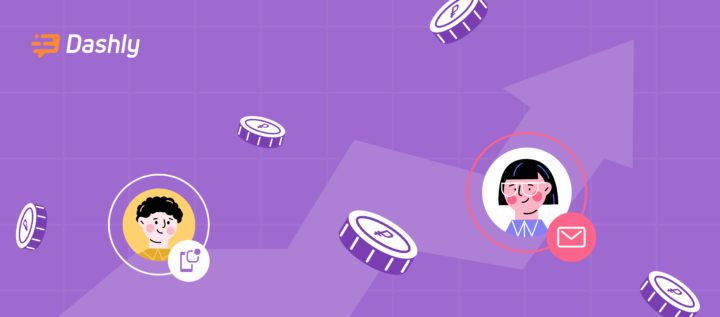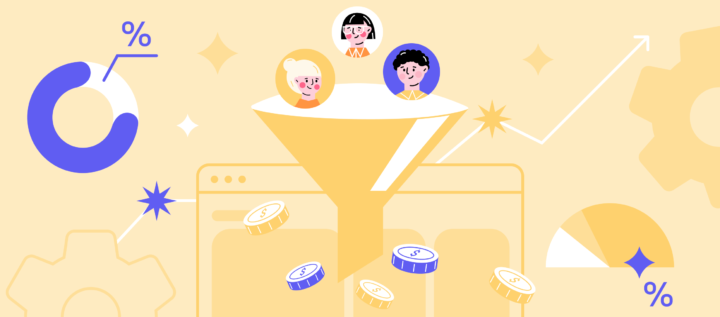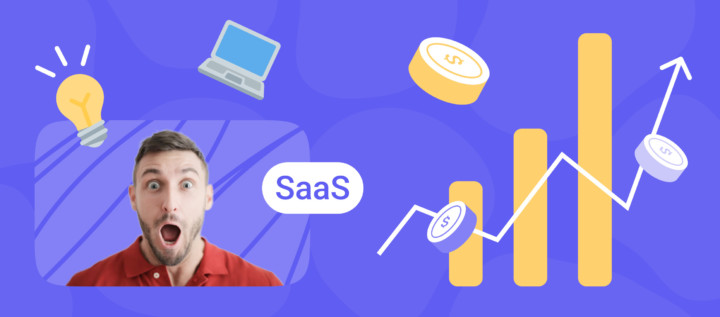How to Build an Email Sales Funnel in 2025 [11 Examples Inside]
![How to Build an Email Sales Funnel in 2025 [11 Examples Inside]](https://www.dashly.io/blog/wp-content/uploads/2024/10/sales-funnel-emails-1440x633.png)
Most sales funnel emails out there are underperforming. Why? Simple — they’re either too aggressive, too long, or just downright irrelevant. 70% of marketers say their funnel emails aren’t driving the necessary conversions. That’s a lot of potential demo requests slipping through the cracks.
Here’s a real kicker: 44% of salespeople give up after just one follow-up email. But, research shows it takes at least 5 touchpoints to close a sale. Imagine — you could be just a couple of emails away from booking that demo, but instead, the lead goes cold because your funnel gave up too soon.
Demo requests not piling up in your inbox? You’re not alone. But here’s the good news — you can fix it. Trust me, I’ve seen it happen.
Let’s dive into how to build a killer email sales funnel that works. Ready?
What is an email sales funnel?
An email sales funnel is a series of emails that guide potential customers through different stages of the sales funnel, from awareness to decision-making.
The goal? Move your subscribers from curious to committed. Whether that’s booking a demo, signing up, or making a purchase. Each email has one job—to lead the customer step by step to your desired outcome.
Now, here’s how we did this for a Dashly client.
They had a ton of leads. But barely any demo bookings. They’d send one or two emails, and then… nothing. No meetings. Leads went cold.
Here’s how we turned it around with a simple email sales funnel focused on follow-up emails.
1️⃣ The Initial Follow-up
When a lead signed up but didn’t book a demo, we sent a personalized email. We referenced their company, industry, and pain points. No hard sell. Just, “Hey [Name], I noticed you’re dealing with [pain point]. We’ve helped companies like yours solve this. Let’s chat about how we can help.”
2️⃣ The Gentle Nudge
Three days later, we followed up again. Casual but direct. “Still interested in solving [pain point]? We’ve helped companies just like yours.” We added a testimonial to make it even more convincing.
3️⃣ The Final Push
A week later, we sent a final follow-up email. This one used urgency. “Last chance to book a demo before our schedule fills up!” Short, to the point, with a clear CTA to book a meeting.
The Results: By sending these follow-up emails at the right times, our client saw a 30% increase in demo bookings. Cold leads were turning into real meetings. All thanks to a simple, well-timed email sales funnel.
Read also:
Boost Conversions with the Reverse Sales Funnel: A 7-Step Success Guide
Good Sales Funnel Stats to Maximize Conversions and Drive Success in 2024
Benefits of an email sales funnel
If you’re a product startup or mid-sized SaaS company, your goal is more inbound sales and demo requests, right? But writing those sales funnel emails can feel like a challenge.
Here’s why getting it right matters — and how a solid email sales funnel can transform your business.
1️⃣ It Moves Leads Through Every Stage of the Funnel
Not every lead is ready to buy right away. That’s why a well-planned email sales funnel is essential. It guides potential customers through each stage — from awareness to decision-making. You’re not sending random emails; you’re crafting a journey.
Studies show that nurtured leads make 47% larger purchases than non-nurtured leads. So, guiding them with the right content at every step pays off.
2️⃣ Personalization + Automation = Less Work, More Results
You don’t need to manually follow up with every lead. A great email sales funnel combines personalization and automation. It sends the right emails at the right time — without you constantly being involved. Personalization can be as simple as addressing their product pain points, company name, or industry.
Personalized emails deliver 6x higher transaction rates. So, by automating this process, you’re saving time while delivering exactly what the customer needs to hear.
3️⃣ Nurtures Leads Without Being Pushy
No one likes a hard sell. With a strategic email sales funnel, you can nurture leads over time by offering valuable content instead of pushing for a quick sale.
Did you know that 80% of new leads never translate into sales? That’s because they aren’t nurtured properly. With helpful content — guides, case studies, blog posts — you’re giving value first, which builds trust.
4️⃣ Increases Demo Requests
Here’s the big one. A strong email marketing funnel isn’t just sending random emails. It’s leading potential customers to take action. By the time they reach the decision stage, they’ll be ready for a demo.
At Dashly, we’ve seen 30% more demo bookings for clients just by refining their follow-up emails and making the calls-to-action clearer and more compelling.
5️⃣ Builds Relationships with Your Customers
Your email sales funnel isn’t just about getting that sale — it’s about building long-term relationships. By delivering valuable content at each stage, you show your customers that you understand their problems and have solutions. This relationship-building creates loyalty, increasing lifetime value by as much as 33%.
6️⃣ You Can Track and Optimize
One of the best things about an email sales funnel is that you can track its performance. Tools like Dashly let you see open rates, click-through rates, and conversion rates. This means you can optimize each email to boost engagement and sales.
That’s why investing in a strategic email sales funnel pays off — more demo requests, stronger relationships, and measurable growth.
Double your SaaS sales funnel metrics with Dashly AI
⭐ Growth the number of qualified leads with conversational quiz
⭐ Increase meetings scheduled with AI lead nurturing campaigns
Difference between sales and marketing email funnel
The difference between a marketing email funnel and a sales email funnel comes down to the goals, timing, and customer journey.
A marketing funnel focuses on creating awareness and building a relationship with potential customers. It’s all about introducing your brand and product to a broader audience.
The emails you send at this stage are more educational, offering value without pushing for a sale. For example, you might send blog posts, guides, or case studies — content that shows your expertise. The idea is to nurture your subscribers and make them curious about your business. It’s a slower burn, aimed at warming up leads over time.
Now, the sales funnel kicks in when the lead has shown clear interest, like downloading a free guide or requesting more info.
Here’s where you switch gears.
The sales email funnel is more direct, with the goal of driving conversions. At this stage, your emails focus on specific product benefits and strong CTAs, like booking a demo or signing up for a free trial. The content is more focused on solving the customer’s problem and closing the deal.
In short, marketing email funnels build awareness and trust, guiding leads into the top of your funnel. The sales email funnel takes those interested leads and pushes them toward conversion, focusing on meetings, demos, and sales.

So, think of it like this: marketing is about creating a relationship, and sales is about sealing the deal. Both work together to move leads through the customer journey and fill your funnel with qualified subscribers ready to act.
Read also:
Reverse Sales Funnel Guide: 7 Proven Steps to Grow Conversions
Unlock Good Sales Funnel Statistics for Explosive Company Growth
The 5 stages of an email sales funnel
Let’s break down a sales funnel that works for both demo requests and free trial sign-ups. Whether a lead requests a demo or signs up for a free trial, the goal is the same: guide them through the journey with strategic emails that lead to a meeting or purchase.
Here’s how it works.
Stage 1: Awareness (Top of Sales Funnel)
At this stage, the lead has shown initial interest — whether by signing up for a free trial or requesting a demo. Your job is to engage them, but not with a hard sell. Your email should spark curiosity and encourage them to explore your product more deeply.
For free trial leads, send them tips on getting started with the product or highlight key features. For demo requests, offer them a glimpse of how your product solves their specific problem.
Example email:
“Hey [Name], saw you’re looking into [problem your product solves]. Here’s a guide to help you make the most of your trial (or demo). Let me know if you’d like to chat!”
Keep it light. Offer value. Let them explore your brand at their own pace.
Stage 2: Consideration (Middle of Sales Funnel)
Now, your lead is warming up. They need more info to feel confident about moving forward. At this stage, your email marketing should focus on addressing their specific pain points and showing how your product solves real problems for similar customers.
This is where you bring in content like case studies, testimonials, or success stories. Show them the value your product brings to their business.
Example email:
“Hi [Name], we helped [Company] solve [pain point] with our product. Want to see how we can do the same for you? Let’s set up a quick chat.”
You’re still guiding them, building trust, but getting closer to booking that meeting or demo.
Stage 3: Decision (Bottom of Sales Funnel)
At this point, the lead has explored your product, and they know the benefits. Now it’s time to get them to commit — either by booking a demo or making a decision within the free trial. Your emails here should be direct, with a clear call-to-action.
Whether they’re in the middle of a free trial or have requested a demo, your job is to make it easy for them to take that next step.
Example email:
“Hey [Name], ready to see how we can help your business with [pain point]? Let’s schedule a quick demo or walk you through the next steps in your trial. Our calendar is filling up fast, so grab a spot today!”
Urgency works well here. Make it simple for them to book that meeting with one click.
Stage 4: Follow-up Emails (For Leads Not Yet Converting)
Some leads need more time, so follow-up emails are critical. Whether they’re in a free trial but haven’t engaged fully or requested a demo but haven’t scheduled it, these email sales should keep the conversation alive. Offer new value each time — highlighting another product feature or reminding them of what they’re missing.
Example follow-up:
“Hi [Name], still thinking about [product]? We’ve seen great results with businesses like yours, and I’d love to show you how. Let’s set up a quick demo or check out this feature in your trial.”
Keep nudging them forward. A few well-timed follow-ups can turn those cold leads into conversions.
Stage 5: Nurturing for Future Sales
Even if a lead doesn’t convert right away, keep them on your email list. Continue sending them valuable contentrelevant to their business. Over time, they may decide the timing is right to come back and book that meeting or complete the trial.
Example email:
“Hi [Name], just wanted to share how we recently helped [Company] with [problem your product solves]. If you’re ever interested in seeing how we can help you, let’s chat!”
A well-timed sales funnel is key — whether your lead comes from a demo request or a free trial sign-up. By sending strategic emails through each stage of the journey, you’re building trust, showing value, and guiding them naturally toward the next step. With a mix of email marketing and follow-ups, you keep your subscribers engaged with your brand and ready to convert when they’re ready.
How to build an email sales funnel
To build an effective email sales funnel starting from a free trial signup or demo request, the process needs to be strategic, personalized, and automated. Here’s a step-by-step guide based on experience with Dashly clients:
1. Set Clear Funnel Stages
Start by outlining each stage of the funnel. Whether the lead signed up for a free trial or requested a demo, the journey should be broken into clear stages:
- Awareness: Welcome the lead and confirm their action (demo request or trial).
- Engagement: Educate the lead on how your product solves their specific problem.
- Conversion: Push for commitment — whether that’s booking the demo or upgrading from the trial.
- Retention: Keep the conversation going to reduce churn or encourage full adoption.
How to do it:
Map these stages using tools like a funnel chart or flow diagram. Identify where your leads drop off and create solutions for moving them to the next step. For Dashly clients, this could be visualizing the customer journey from sign-up to demo booking, adjusting each touchpoint based on quiz responses.
2. Personalize Content with Data (from Quiz Responses)
Since Dashly doesn’t rely on behavior tracking anymore, personalization comes from the qualification quiz responses. Leads will feel more connected when emails reflect their answers, like their business size, industry, or specific pain points.
How to do it:
Review the qualification quiz data and segment your subscribers into different lists based on their responses. Create different content tracks for each list, making sure the email marketing feels relevant to their needs. This can be automated in tools like Dashly’s AI-powered system.
3. Use Automation for Timely Follow-ups
Set up an automated email sequence that guides your leads through the funnel. Once a lead signs up for a free trial or demo, the automation should trigger a series of emails that nudge them closer to conversion. This reduces manual effort and ensures that no contact slips through the cracks.
How to do it:
Use Dashly’s automation features to set up triggers and sequences based on the lead’s actions (or inactions). For example, if they haven’t booked a demo after a set period, a reminder email can automatically follow up. Automating these touchpoints increases efficiency and ensures consistent follow-up.
4. Offer Value at Every Stage
Each stage of the sales funnel should add value. Early on, the focus should be on educating the lead about your product. Later, you can highlight specific solutions and case studies that match their needs. The final push should focus on demonstrating ROI or the urgency of acting now.
How to do it:
For example, in the engagement stage, you might share a case study that speaks directly to their industry or pain points from the quiz. Further down the funnel, you’ll want to show them why booking a demo or moving forward in the free trial is crucial for their business growth.
5. Monitor and Optimize the Funnel
After setting up the funnel, regularly review its performance. Look at conversion rates, open rates, and click-through rates to see how well leads are progressing. Where do they drop off? Is there a stage that needs stronger content or a better CTA?
How to do it:
Dashly offers metrics tracking within its email marketing tools. Use this data to tweak your approach —whether it’s adjusting the messaging or adding a new touchpoint. Continuously optimizing the funnel ensures it stays effective as your brand evolves.
By setting up a structured email sales funnel, personalizing each touchpoint, and using automation for follow-ups, you create a seamless customer journey that turns leads into loyal customers. Each stage serves a purpose, and every email moves them closer to conversion. With these strategies, you’ll create a funnel that works for both free trial and demo request leads, ensuring long-term success for your brand.
Double your SaaS sales funnel metrics with Dashly AI
⭐ Growth the number of qualified leads with conversational quiz
⭐ Increase meetings scheduled with AI lead nurturing campaigns
Examples of sales funnel emails
Let’s break it down into steps, with a clear flow for both free trial signup and demo request. Each has unique needs, but the idea is to keep it friendly, helpful, and moving toward conversion.
Free Trial Signup Flow
Step 1: Immediate Welcome Email (Right After Signup)
When someone signs up for a free trial, hit them with a friendly welcome email right away. Make them feel excited about their journey with your product and show them how to get started.
For Dashly clients, we always suggest an instant, personalized welcome. Show them how easy it is to dive in.
How to do it:
- Subject Line: “Welcome to [Your Product]—Here’s How to Get Started!”
- Content: Introduce your product. Share quick steps on how they can explore the most important features first. Maybe include a tutorial video or an onboarding guide to get them comfortable fast.

Step 2: Follow-Up Email (1-3 Days After)
Now that they’ve had time to poke around, follow up. Focus on solving a key problem they might have identified in the quiz during sign-up. Show how your product addresses their pain points and delivers value.
Dashly clients see a boost in engagement when the second email is personalized to the lead’s biggest problem, based on their answers.
How to do it:
- Subject Line: “Solve [Lead’s Problem] with [Your Product]”
- Content: Showcase a feature or product benefit. Share a customer journey or case study to illustrate how others have succeeded.
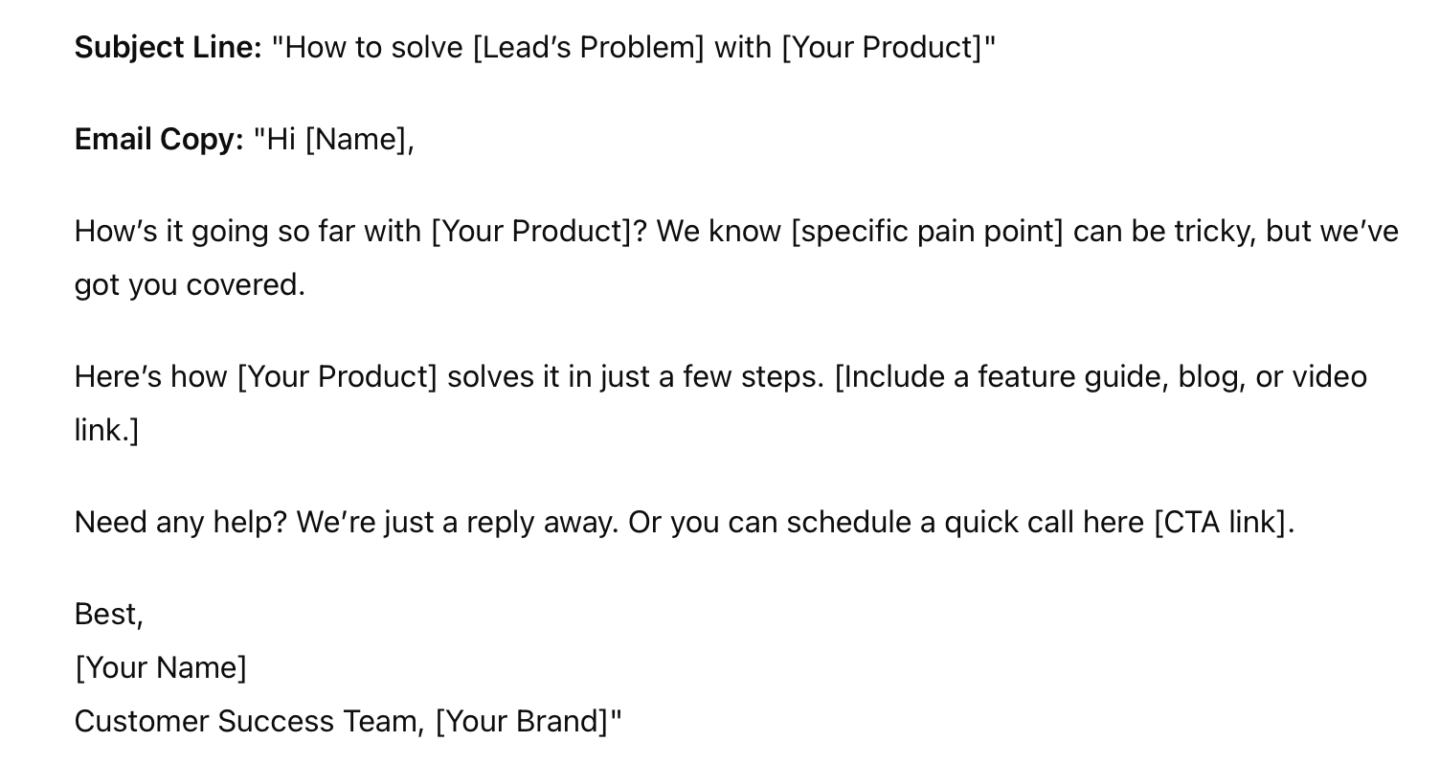
Step 3: Midway Engagement Email (4-7 Days After)
By now, they’ve seen the product, but maybe they aren’t fully using it. Remind them of the value they’re missing if they don’t dive deeper. Encourage them to explore all the features that’ll make their life easier.
At Dashly, we focus on email sales that push for engagement. If they’re not fully using their trial, now’s the time to nudge them to see the full potential.
How to do it:
- Subject Line: “Unlock the Full Power of [Your Product]”
- Content: Highlight underused features that could solve their biggest business challenges.
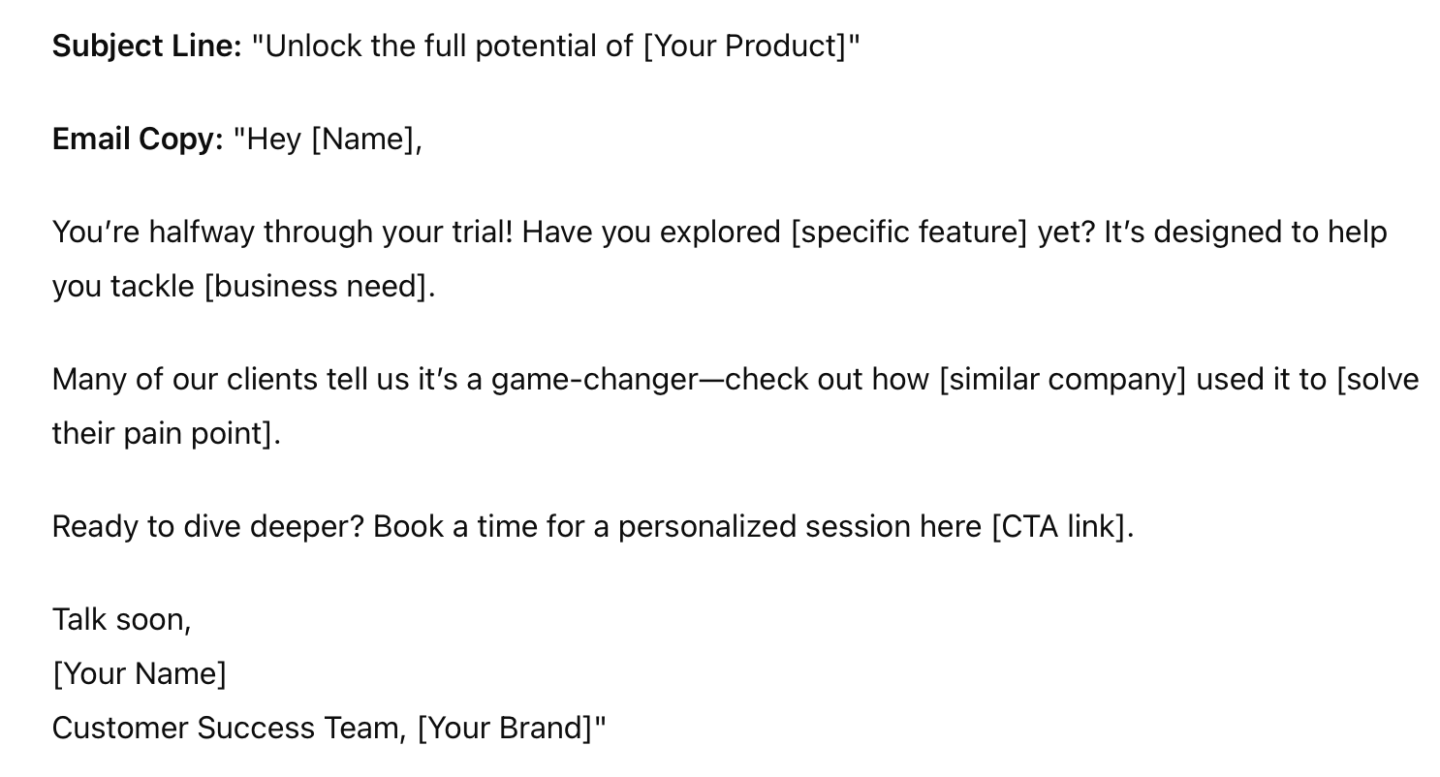
Step 4: Urgency Email (10 Days After)
With only a few days left in their free trial, add urgency. Let them know they’ll miss out if they don’t make the most of it. Offer to extend the trial or schedule a consultation to maximize their use.
Expert Tip: Dashly clients often see better results when they offer a personal consultation or trial extension at this stage.
How to do it:
- Subject Line: “Last Chance to Explore [Your Product]—Only 2 Days Left!”
- Content: Emphasize the clock ticking on their trial. Offer a bonus like a free consultation to get them over the finish line.

Step 5: Final Push & Offer Email (1-2 Days Before Trial Ends)
Send a final push before their trial ends. Remind them of the value they’ve seen and what they’ll gain by converting to a full plan. Keep the email straightforward with a clear CTA.
Adding a free onboarding or consultation session post-trial can make the transition smoother, based on Dashly’s experience.
How to do it:
- Subject Line: “Ready to Take the Next Step with [Your Product]?”
- Content: Highlight the problem they’re solving and why your product is the best long-term solution. Add a bonus to make the transition even more appealing.

Step 6: Post-Trial Follow-Up (After the Trial Ends)

Demo Request Flow
Step 1: Immediate Welcome Email (Right After Demo Request)
When someone requests a demo, send an instant, friendly email acknowledging their request. Let them know what’s next and offer any tips to prep for the meeting.
At Dashly, we recommend using this opportunity to reinforce why they made the right choice requesting a demo.
How to do it:
- Subject Line: “Thanks for Requesting a Demo! Here’s What’s Next”
- Content: Set expectations for the demo. Highlight how your product will address their specific needs.

Step 2: Pre-Demo Email (1-2 Days Before Demo)
A day or two before the demo, send a reminder email. Include some content or questions to help them get the most out of their time with you.
Dashly clients get better demo results when they send prep materials ahead of time.
How to do it:
- Subject Line: “Get Ready for Your Demo with [Your Product]!”
- Content: Share a quick guide or checklist of things to think about before the demo. Offer to answer any questions beforehand to make the meeting productive.
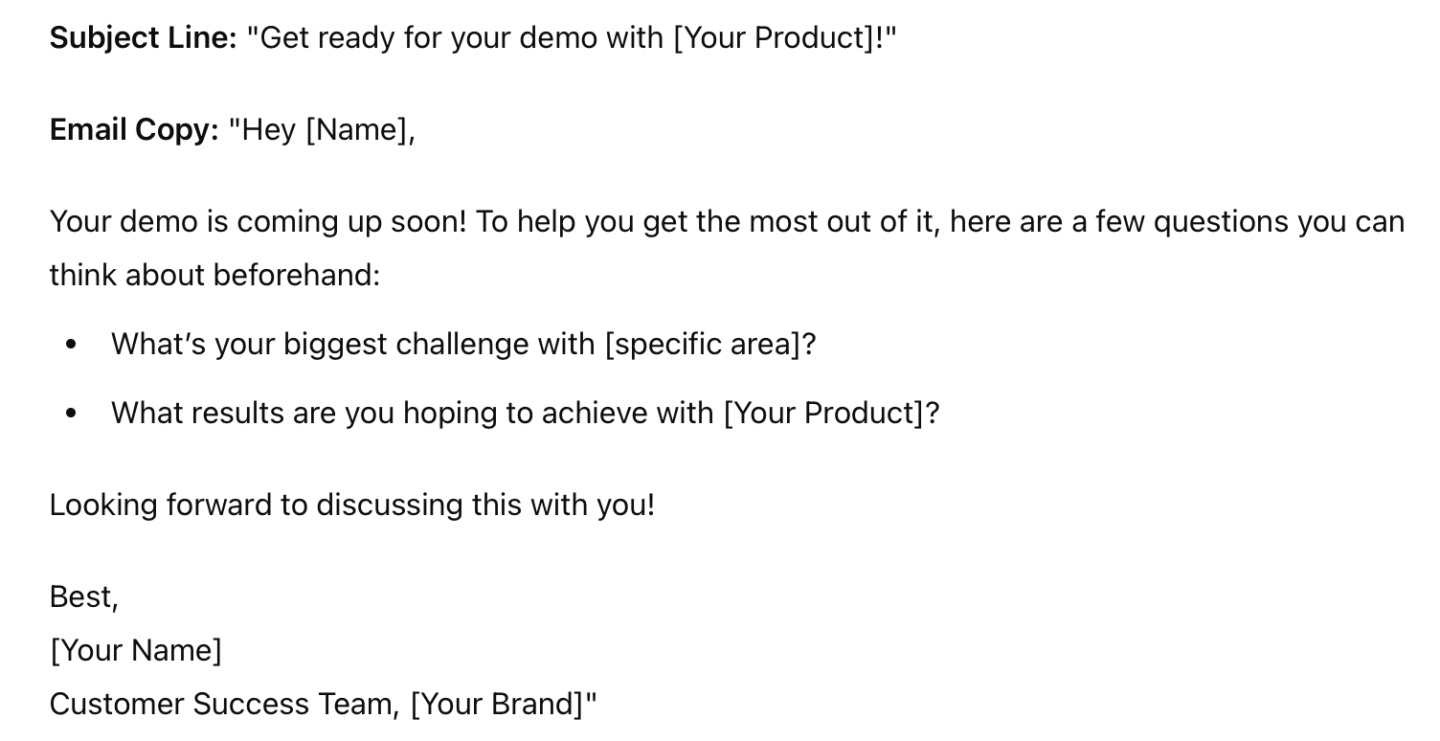
Step 3: Post-Demo Email (Right After Demo)
After the demo, follow up immediately. Recap what was discussed and include a recording (if possible) for their team. Offer to jump on another call if needed.
At Dashly, we’ve seen that timely follow-ups after a demo keep the momentum going.
How to do it:
- Subject Line: “Great Chat! Here’s Your Demo Recap”
- Content: Recap the key points from the demo and reiterate the value your product can bring to their business. Make it easy for them to take the next step—whether that’s signing up for a trial or buying.

Step 4: Conversion Nudge Email (3-5 Days After Demo)
Now, nudge them toward conversion. Focus on how your product solves their pain points. Offer a time-limited incentive or extra value if they act now.
Add urgency, like offering a discount or a bonus feature for committing within a week.
How to do it:
- Subject Line: “Let’s Take the Next Step with [Your Product]”
- Content: Push for a decision. Offer a limited-time discount or other incentive to sign up.
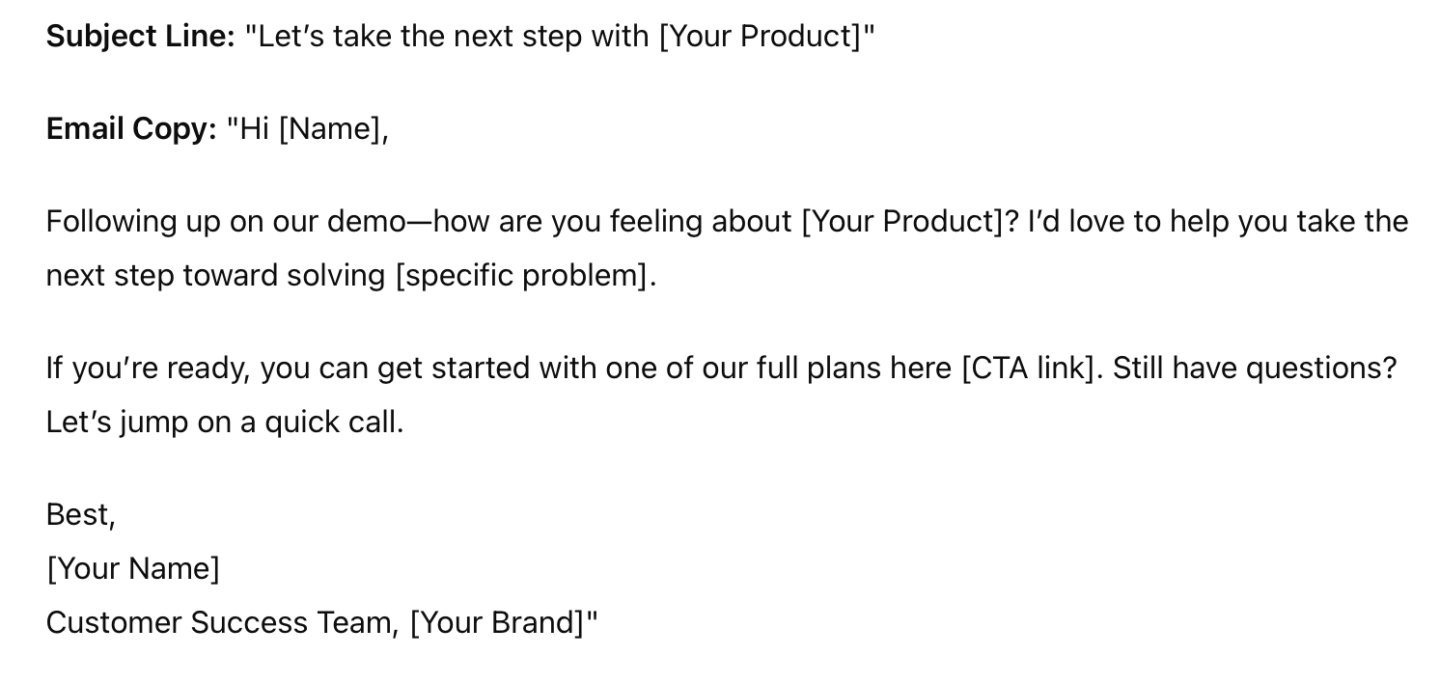
Step 5: Follow-Up Reminder Email (7-10 Days After Demo)
If they still haven’t converted, send a follow-up. Reference something specific from their demo to personalize the message and remind them of the value.
Based on Dashly’s data, personalized follow-ups increase engagement.
How to do it:
- Subject Line: “Still Considering [Your Product]? Let’s Chat”
- Content: Include a CTA to schedule another call if they need more info.
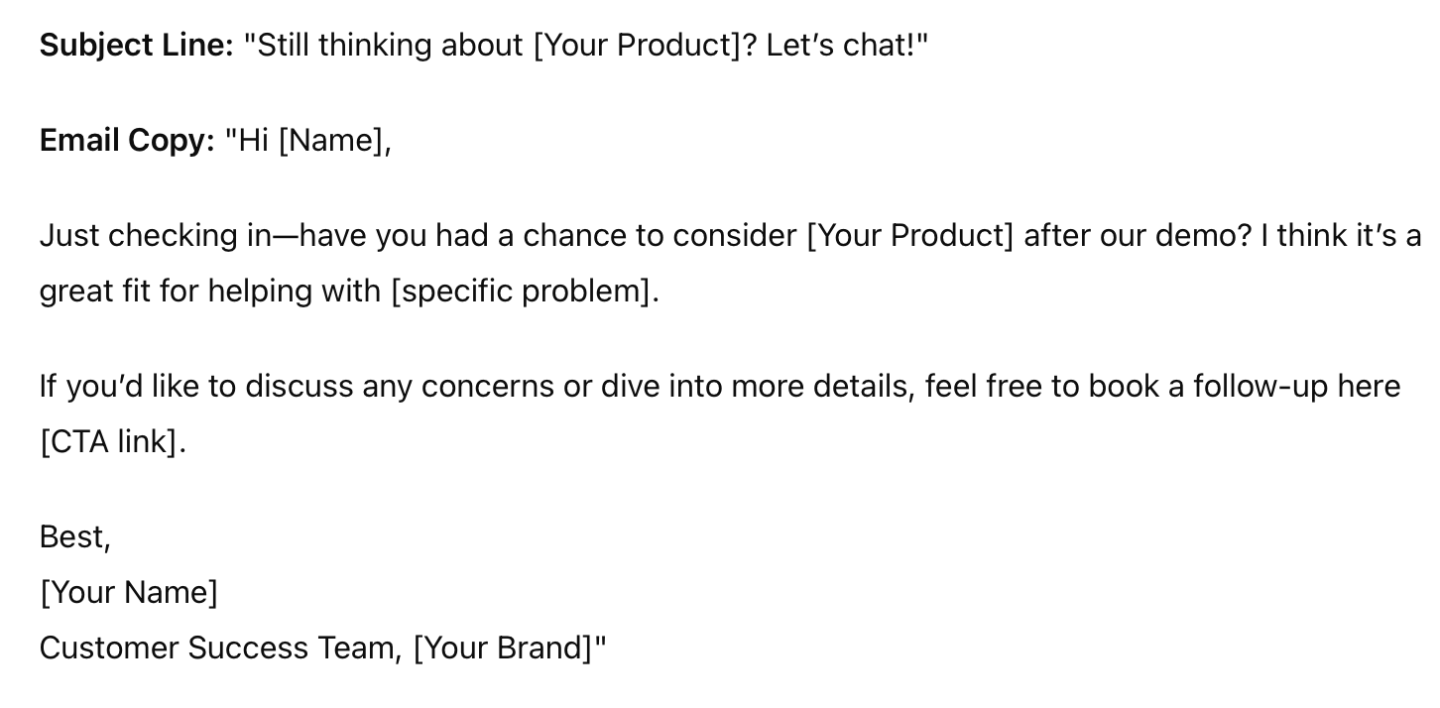
Double your SaaS sales funnel metrics with Dashly AI
⭐ Growth the number of qualified leads with conversational quiz
⭐ Increase meetings scheduled with AI lead nurturing campaigns
FAQ
What is a sales funnel email?
A sales funnel email is a series of messages designed to guide a lead through the stages of the sales funnel—from awareness to decision. Each email serves a purpose, nurturing the lead and encouraging them to take the next step.
How many emails should be in a funnel?
A sales funnel typically includes 5-7 emails, though the number may vary based on the lead’s engagement. These emails are sent at strategic intervals to move the lead toward a meeting or purchase.
What is a sales letter funnel?
Read also:
– 10 inspiring sales funnel examples to boost your business growth;
– Mastering sales funnel analysis: step-by-step guide, tools, and examples;
– 15 Best Sales Funnel Creators for Automated Conversions;
– Ultimate guide to an AI sales funnel: the best tips, tools and common mistakes to avoid
A sales letter funnel is a type of funnel where long-form copy persuades leads to convert. It often includes multiple detailed emails or landing pages that explain the product’s benefits and handle objections.
What is an automated email funnel?
An automated email funnel sends pre-scheduled emails based on the lead’s actions or stage in the funnel. It’s a time-saving way to nurture leads while ensuring they get timely, relevant content.


